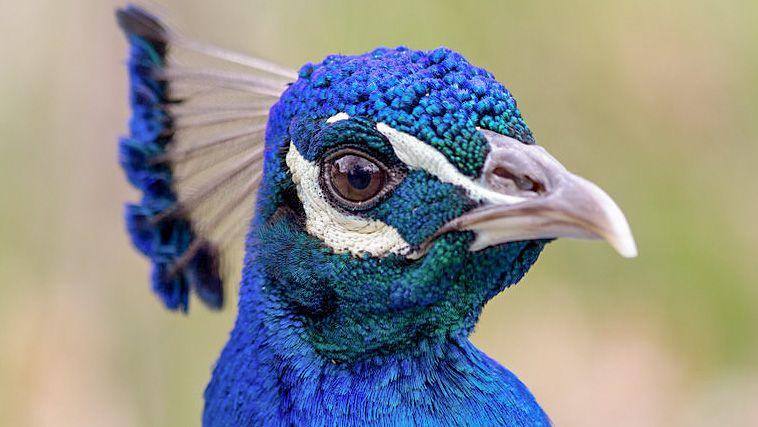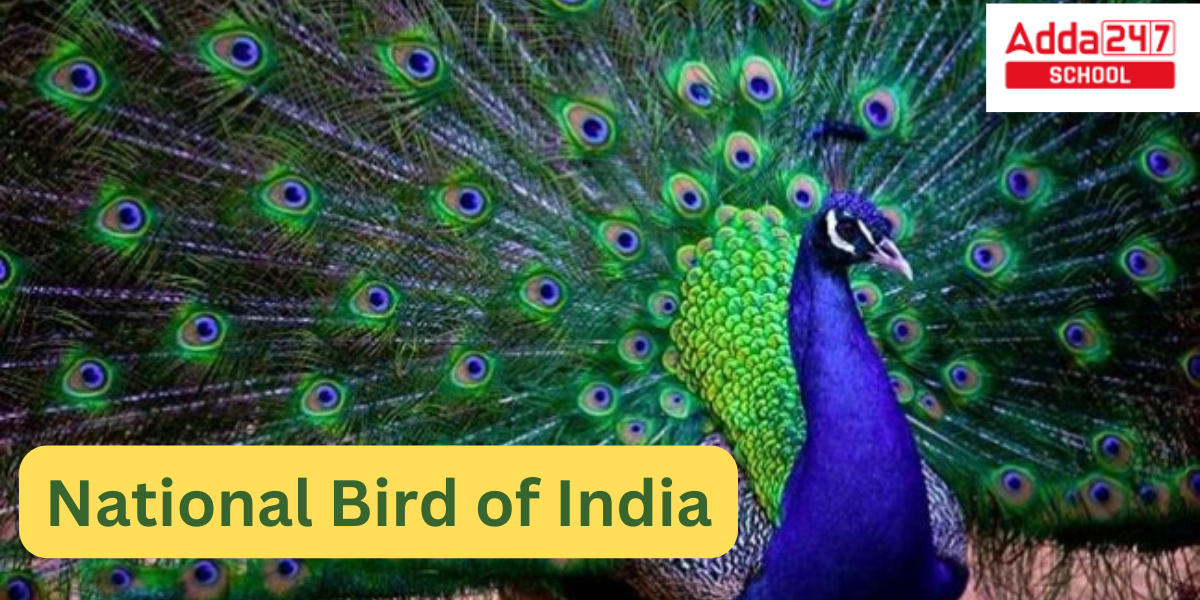Table of Contents
National Bird of India: The Indian Peacock
The national bird of India is the Indian peacock, Pavo cristatus, a colourful bird with a fan-shaped crest of feathers, a white patch behind the eye, and a long, thin neck. The Indian Peacock (National Bird of India) species’ male is more colourful than the female, with a stunning bronze-green tail and breast that have 200 long, elongated feathers each. The female loses the tail and is somewhat smaller than the male. The female is brownish. Beautiful to watch is the male’s complex courtship dance, which includes fanning out his tail and grooming his feathers.
Scientific Names of The Common Animals And Plants
Facts about National Bird of India: The Indian Peacock
Here are some interesting facts about the Indian Peacock which is the National Bird of India:
- A peafowl species that is indigenous to the Indian subcontinent is the Indian peacock (Pavo cristatus), commonly referred to as the common peafowl and the blue peafowl.
- It has been adopted by numerous other nations. Although both sexes are frequently referred to informally as a peacock, male peafowl are known as peacocks and female peafowl as peahens.
- The Indian peacock (National Bird of India) is well recognized for its long train of extended upper-tail covert feathers that contain colourful eyespots.
- Indian Peacock which is the National Bird of India has a brightly coloured, primarily blue fan-like crest of wire-like feathers with spatula tips. During courtship, these stiff feathers are lifted into a fan and quivered.

- The Indian Peacock (National Bird of India) can still fly in spite of the size and length of their covert feathers.
- Peahens lack the train, have a dark brown coat, a white face, and an iridescent green lower neck.
- The Indian peafowl or the Indian Peacock (National Bird of India) spends much of its time foraging for berries and grains on the ground in open forests or on land that is being farmed.
- They also hunt on snakes, lizards, and small rodents.
- The Indian Peacock ((National Bird of India) are easily heard thanks to their powerful calls, which in dense woodland frequently signal the presence of a tiger-like predator.
- The Indian Peacock ((National Bird of India) can hunt on the ground in small packs and typically attempt to flee on foot through brush, however they will occasionally soar into large trees to roost.
Life Cycle of Butterfly Project and Explanation for Class 4 to 8
National Bird of India Essay in English
Numerous unusual species can be found in India. The peacock, which is National Bird of India, is one of them. Peacocks are famed for their amazing physical appearance. Peacocks are well-known for having a long tail of feathers and an attractive crest on their heads. Their feathers are united into one long tail when they run about on the ground. However, when a female is around, the peacock spreads its feathers, displaying lovely eye-like patterns.
Peacocks are of two primary varieties: The Indian peacock (National Bird of India) and the Burmese peacock. From head to tail, the Indian peacock can reach lengths of 195 to 225 cm. When fully grown, they can reach weights of up to 5 kg. The feathers have some green undertones and are an iridescent blue colour. The peacock’s feather is referred to as a train. These lengthy feathers can number over 200 on an adult peacock. Each feather has a lovely eye at the end of the feather in the shape of an oval. Together, they provide the tail a stunningly symmetrical eye-like appearance.
There are Indian peacock (National Bird of India) all around the nation. The Indian Peacock (National Bird of India) coexist with people in urban areas, semiarid areas, and woodlands. Peacocks are extremely shy and flee when they come into contact with people, unlike other birds. Due to the size of their body and feathers, they can fly, although they cannot do it for very long. Peacocks live in colonies that contain both males and females. They consume seeds, snakes, and insects as they are omnivorous birds. Farmers frequently appreciate them because they keep pests out of their fields.


 NIOS Syllabus 2025 Out, Download Subject...
NIOS Syllabus 2025 Out, Download Subject...
 JNU Syllabus 2024, Download Jawaharlal N...
JNU Syllabus 2024, Download Jawaharlal N...
 UP Board Exam Date 2025 Class 12, 10 Out...
UP Board Exam Date 2025 Class 12, 10 Out...































